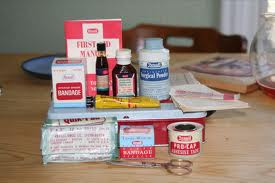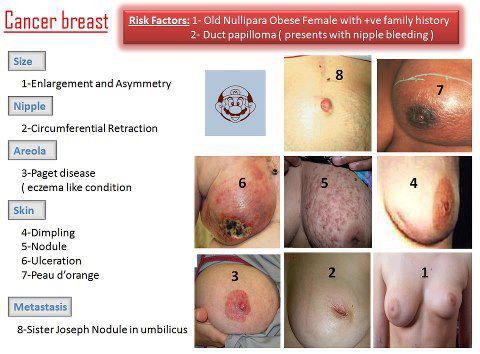A first aid kit for all home and workplace needs
Preassembled first aid kits have become a necessity in most homes and workplaces. Instead of searching for a spare bandage, plaster or burn cream, a ready first aid kit ensures that all necessary supplies to deal with home or workplace accidents are in a secure and accessible place.
Boxes and cabinets
A well-stocked first aid kit is a necessity in every workplace, public building and home. It is also wise to carry such kits in cars and other vehicles. You need to start off with a box or cabinet to hold all of the supplies. This must be accessible but out of reach of small children. The box must be roomy and durable. Portable boxes should be easy to carry, preferably having both handles and shoulder straps. The box must be easy to open.
First aid box and cabinet sizes are designed to hold supplies for a specific number of people and risks. They all comply with Health and Safety (HSE) regulations and come with guidance on the approved code of practice (Acop). These holders may be bought separately or fully equipped. Such supplies include a guidance leaflet, safety pins, sterile dressings, eye pads, bandages, anti burn lotions, alcohol free wipes and disposable non-latex gloves.
Necessary items
Some necessary first aid supplies may not always be included in a pre-assembled kit. These can be bought separately and kept close to the main first aid cabinet. Such items include flashlights, antibiotic and anti bacterial lotions, scissors, tweezers and blankets. These supplies may be tailored to the people at risk and include glucose and glucose gels, portable defibrillators, splints, stopwatches and extra supplies of prescription medicines in the case of a family first aid box. Always keep emergency service phone numbers and fire extinguishers close by. Boundtree.co.uk, for more information on essential first aid items.
Manuals
First aid manuals are an indispensible item in all homes and workplaces. Manuals should be read and understood as soon as possible and before accidents occur. They give easy to follow guidance on how to treat sprains, bites, wounds and other consequences of common accidents. Such manuals also include instructions in the latest life saving techniques. There are manuals for professional users such as paramedics and emergency response drivers, as well as guides for first aid in wilderness locations.
Conclusion
First aid supplies are necessary emergency items for every workplace, home and vehicle. The supplies may be tailored to address everyday accidents at home, workplace or sports injuries and survival after a disaster, specifically in flood or earthquake prone regions. Such first aid kits should not be just fully stocked and accessible; every adult on the premises should know how to use them. This means reading and understanding all available first aid manuals. First aid kits in vehicles should be designed to cope with the climate in all of the areas where the vehicle is driven.
Author Bio:
Shirley is a first aid training instructor with 30 years professional experience. She conducts courses customised to specific workplaces such as the electrical and chemical industries, as well as basic courses for schools. She has just completed a manual on first aid in tropical climates. Visit this page, for more information on first aid essentials.
Boxes and cabinets
A well-stocked first aid kit is a necessity in every workplace, public building and home. It is also wise to carry such kits in cars and other vehicles. You need to start off with a box or cabinet to hold all of the supplies. This must be accessible but out of reach of small children. The box must be roomy and durable. Portable boxes should be easy to carry, preferably having both handles and shoulder straps. The box must be easy to open.
First aid box and cabinet sizes are designed to hold supplies for a specific number of people and risks. They all comply with Health and Safety (HSE) regulations and come with guidance on the approved code of practice (Acop). These holders may be bought separately or fully equipped. Such supplies include a guidance leaflet, safety pins, sterile dressings, eye pads, bandages, anti burn lotions, alcohol free wipes and disposable non-latex gloves.
Necessary items
Some necessary first aid supplies may not always be included in a pre-assembled kit. These can be bought separately and kept close to the main first aid cabinet. Such items include flashlights, antibiotic and anti bacterial lotions, scissors, tweezers and blankets. These supplies may be tailored to the people at risk and include glucose and glucose gels, portable defibrillators, splints, stopwatches and extra supplies of prescription medicines in the case of a family first aid box. Always keep emergency service phone numbers and fire extinguishers close by. Boundtree.co.uk, for more information on essential first aid items.
Manuals
First aid manuals are an indispensible item in all homes and workplaces. Manuals should be read and understood as soon as possible and before accidents occur. They give easy to follow guidance on how to treat sprains, bites, wounds and other consequences of common accidents. Such manuals also include instructions in the latest life saving techniques. There are manuals for professional users such as paramedics and emergency response drivers, as well as guides for first aid in wilderness locations.
Conclusion
First aid supplies are necessary emergency items for every workplace, home and vehicle. The supplies may be tailored to address everyday accidents at home, workplace or sports injuries and survival after a disaster, specifically in flood or earthquake prone regions. Such first aid kits should not be just fully stocked and accessible; every adult on the premises should know how to use them. This means reading and understanding all available first aid manuals. First aid kits in vehicles should be designed to cope with the climate in all of the areas where the vehicle is driven.
Author Bio:
Shirley is a first aid training instructor with 30 years professional experience. She conducts courses customised to specific workplaces such as the electrical and chemical industries, as well as basic courses for schools. She has just completed a manual on first aid in tropical climates. Visit this page, for more information on first aid essentials.




Comments
Post a Comment